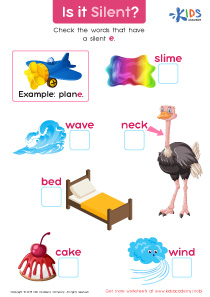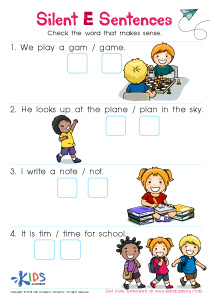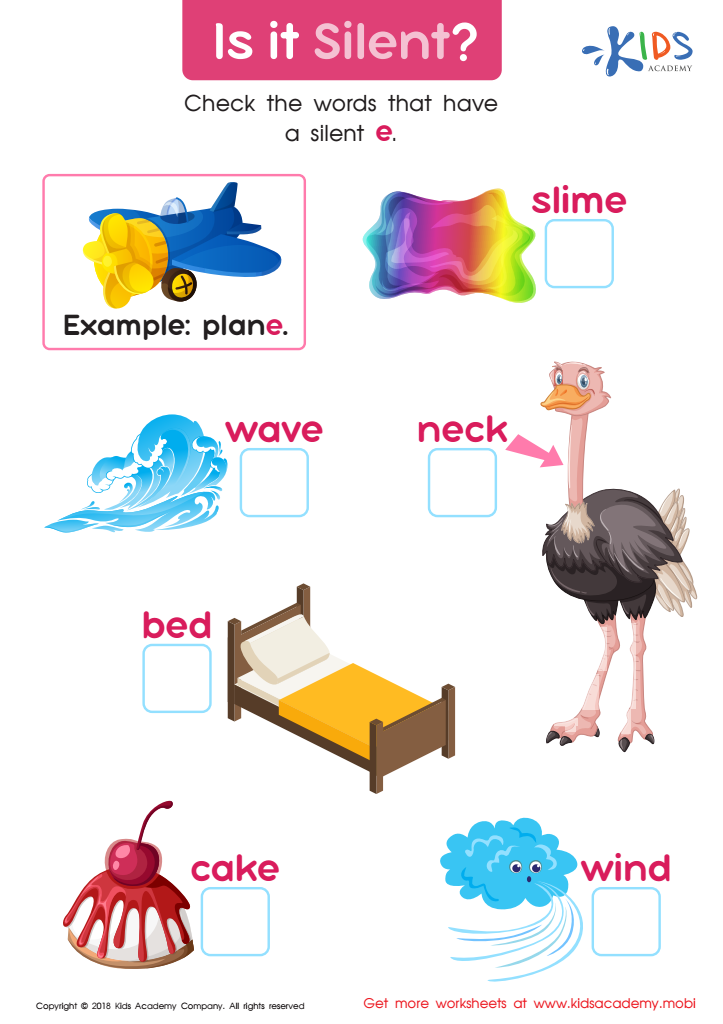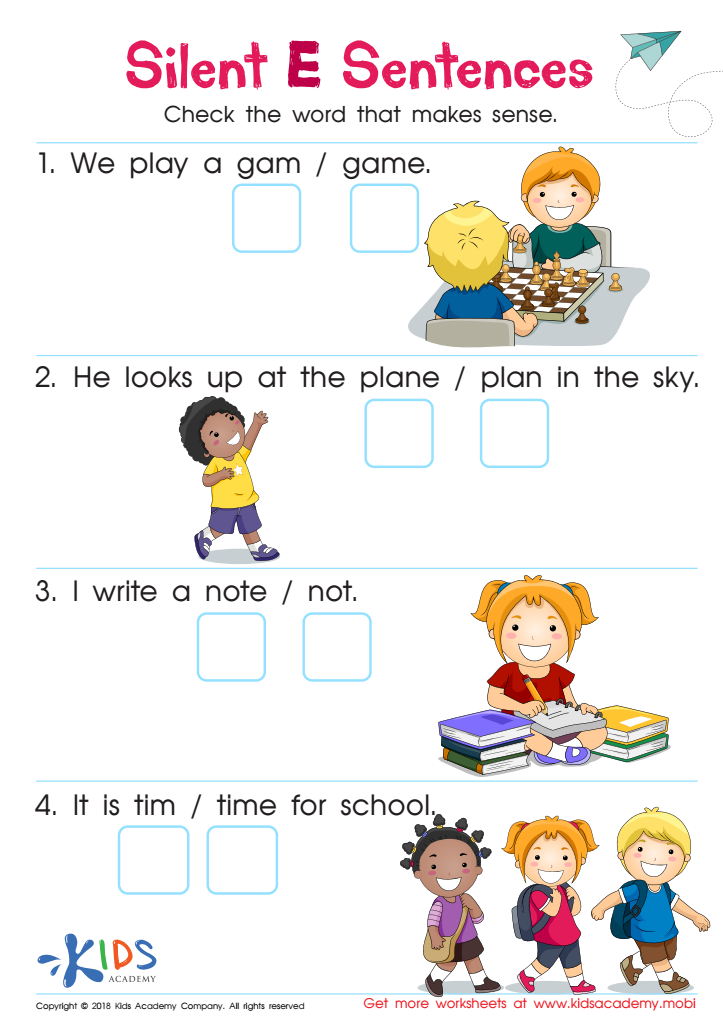Read Words with a Silent E - Lesson for Grade 1, Chapter - Long Vowel Patterns
In the lesson titled "Read Words with a Silent E," Grade 1 students will embark on an intriguing journey into the world of long vowel patterns within the Phonics unit. The essence of this lesson is to introduce and solidify the understanding of how a silent 'e' at the end of a word can change the pronunciation of the vowel within that word, making it 'say its name', or produce its long vowel sound. This fundamental concept is crucial for young learners as it lays the groundwork for proficient reading and spelling skills.
Through engaging activities such as the "Is It Silent? Worksheet" and the "Silent E Sentences Worksheet," students will have hands-on practice in identifying silent 'e' patterns and applying this knowledge to read words and construct sentences accurately. This direct interaction not only reinforces their learning but also boosts their confidence in decoding more complex words independently.
Understanding the role of the silent 'e' is pivotal in enhancing reading fluency and comprehension. It serves as a building block for students, equipping them with the skills needed to tackle more challenging texts as they progress in their educational journey.


-
Activity 1 / Is It Silent? Worksheet
Phonetic sounds can be tricky sometimes, especially as the same sounds can actually turn out not sounding the same when found in two different words. For example, the /e/ sound found in words like ‘egg’ is not the same as the silent /e/ sound found at the end of words like ‘slime’. Ask your students if they can give you some more examples of words that have this silent /e/ sound. Read the words in this worksheet aloud together with your little ones, and ask them to check the words that have a silent /e/.
-
Activity 2 / Silent E Sentences Worksheet
Learning when to use Silent E at the end of words is tricky for young readers, particularly those who use their sounds for decoding. This fun and friendly worksheet addresses several words that look the same but for the Silent E, and helps them practice discriminating visually while choosing the correct word for sentence blanks. They’ll be able to check off the correct word, while visually familiarizing the differences in closed syllables and words that need the E at the end.


